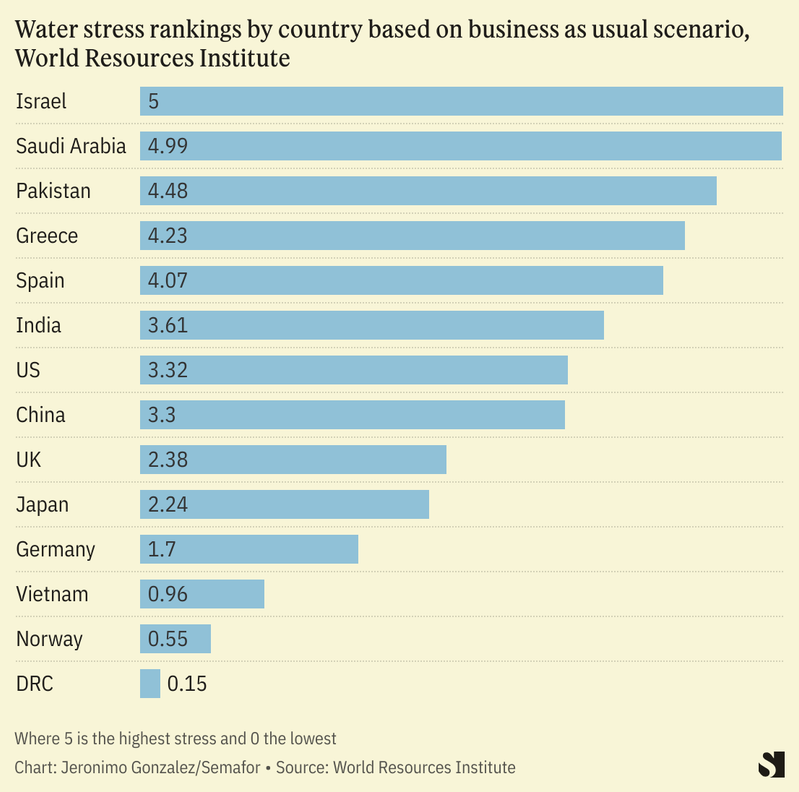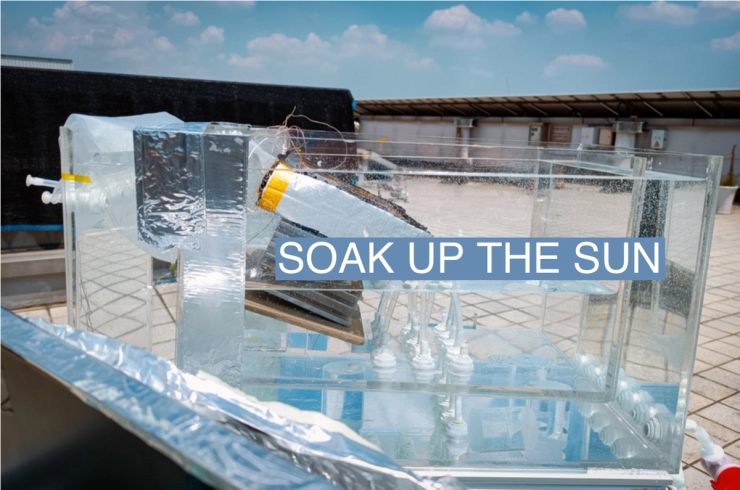The News
Engineers at MIT and China’s Shanghai Jiao Tong University have developed a solar-powered device that could produce freshwater that is cheaper than tap water.
In a paper in the Joule journal, the scientists illustrated how the device allows water to circulate and then evaporate. The resulting water vapor is condensed and captured, leaving the salt behind. If scaled to the size of a briefcase, the device could produce about four to six liters of drinking water per hour, according to their findings. At six liters per hour, it would produce roughly the same amount of water that an average person in the UK uses every day.
“For the first time, it is possible for water, produced by sunlight, to be even cheaper than tap water,” said Lenan Zhang, an MIT research scientist.
SIGNALS
Using renewable energy to desalinate water could have a seismic impact on the energy use of water-scarce regions, and on global greenhouse gas emissions. According to the International Energy Agency, as much as 15% of the total energy supply of the Middle East — the most water-scarce region in the world — could be spent on desalinating water in 2040. The need for freshwater has fed a desalination “boom” in the Middle East, with forecasters expecting the region’s desalination capacities to double by 2030. By 2025, Saudi Arabia’s desalination capacity “will have to cover more than 90% of the country’s water consumption,” per a report by the Policy Center for the New South.

Although the Middle East alone accounts for about 50% of the world’s desalination capacity, global demand is expected to surge as rising sea levels encroach on rivers and other freshwater reservoirs. Saltwater has begun pushing up the Mississippi River, and is expected to contaminate much of New Orleans’ public water supply, The New York Times reported. Beyond the health concerns, seawater could damage the city’s water system infrastructure. Longer, drier summers could further weaken the capacity of the river to push the water south, putting cities further upstream at risk.
Growing population and rising global temperatures will further strain the world’s fast-depleting freshwater reservoirs. A recent World Resources Institute report said that almost three billion people will face an extremely high risk of water shortage, while around 40% of the world’s population will live in areas with at least a high risk. The Middle East and North Africa will be the regions with the highest water stress in the world. “Water challenges are only going to become more frequent and more intense,” Heather Cooley of the Pacific Institute told The Washington Post. “That needs to motivate us to begin preparing and implementing projects.”
A deal expected to be announced at next month’s COP28 could lay the groundwork for future water trading. Israel’s energy minister and the head of Masdar, the Emirati renewable energy company, met to discuss a water-for-energy deal with Jordan, whereby Jordan would supply electricity from a UAE-funded plant to Israel in exchange for desalinated water. Jordan, the second-most water-scarce country according to UNICEF, could get as much as 200 million cubic meters of water per year, equivalent to roughly two months of New York City’s consumption.



